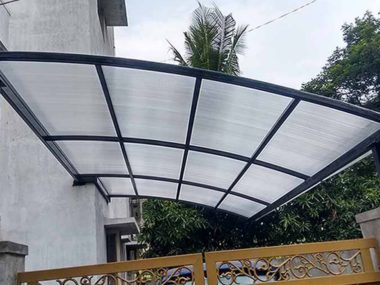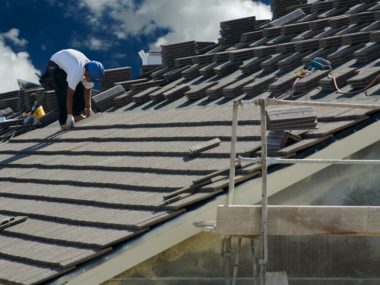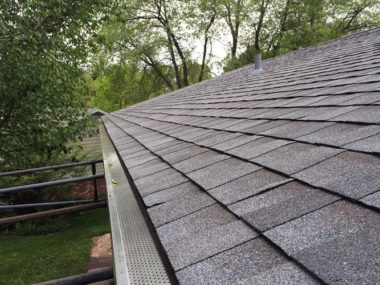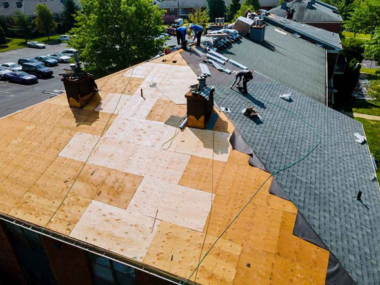Importance of Proper Ventilation
A properly ventilated roof plays a crucial role in maintaining the overall health of a building. Ventilation allows for the exchange of air between the attic and the outside environment, preventing the build-up of moisture and heat. This not only protects the integrity of the roof but also ensures the longevity of the entire structure.
Proper ventilation helps to regulate temperature and reduce humidity levels in the attic, preventing the formation of condensation and the growth of mold and mildew. It also aids in preventing ice dams during cold winter months, reduces energy costs, and extends the lifespan of roofing materials.
How Ventilation Affects Roof Health
Ventilation directly impacts the health of a roof by preventing the accumulation of moisture and heat in the attic space. Excessive moisture can lead to the growth of mold and mildew, causing damage to the wood structure and compromising the integrity of the roof hence needing a commercial roof installation los angeles.
In addition, heat trapped in the attic can lead to the deterioration of roofing materials, such as shingles, causing them to become brittle and crack over time. This can result in leaks, water damage, and the need for costly repairs.
By allowing for the proper airflow, ventilation helps to maintain a stable temperature in the attic and prevents excess moisture from building up, thus preserving the overall health and structural integrity of the roof.
Common Roof Problems Caused by Poor Ventilation
Mold and Mildew Growth
Poor ventilation can lead to the growth of mold and mildew in the attic, which can cause health issues for occupants and damage to the structure of the roof. Mold and mildew thrive in moist and warm environments, which can result from inadequate airflow and ventilation.
Ice Dams Formation
In colder climates, poor ventilation can lead to the formation of ice dams on the roof. Ice dams occur when snow on the roof melts and refreezes at the eaves. This can cause water to back up under the shingles, leading to leaks and potential damage to the roof and interior of the building.
Roof Deck Deterioration
Poor ventilation can accelerate the deterioration of the roof deck, which is the base on which the roofing materials are installed. Excess heat and moisture trapped in the attic can cause the roof deck to warp, rot, or weaken over time.
Higher Energy Costs
When a roof is not properly ventilated, heat can become trapped in the attic, resulting in higher energy costs to cool the building. This is because the excessive heat in the attic can transfer into the living spaces below, causing the air conditioning system to work harder to maintain a comfortable temperature.
Decreased Lifespan of Roofing Materials
Poor ventilation can significantly reduce the lifespan of roofing materials. Excessive heat and moisture can cause shingles to deteriorate more quickly, leading to leaks and the need for premature roof replacement. Proper ventilation helps to extend the lifespan of roofing materials by regulating temperature and preventing moisture build-up.
Benefits of Adequate Roof Ventilation
Improved Indoor Air Quality
Adequate roof ventilation helps to improve indoor air quality by reducing the build-up of pollutants, excess moisture, and odors in the attic space. This can have a positive impact on the overall health and comfort of occupants in the building.
Reduced Energy Costs
Proper ventilation can help to reduce energy costs by preventing heat build-up in the attic. By maintaining a cooler attic temperature, less strain is placed on the air conditioning system, resulting in decreased energy consumption and lower utility bills.
Extended Roof Lifespan
Adequate ventilation can significantly extend the lifespan of a roof by preventing damage caused by heat and moisture. By reducing the risk of mold growth, ice dams, and deterioration of roofing materials, ventilation helps to maintain the integrity of the roof and ensure its longevity.
Prevention of Mold and Mildew
Proper ventilation is key to preventing the growth of mold and mildew in the attic. By allowing for proper airflow and moisture control, ventilation helps to create an environment that is less conducive to mold and mildew growth. This helps to protect both the roof and the health of the building’s occupants.
Enhanced Comfort and Temperature Regulation
Adequate roof ventilation helps to regulate the temperature in the attic, preventing excessively hot or cold conditions. This can have a positive impact on the overall comfort of the building and help to maintain a more consistent temperature throughout the living spaces.
Types of Roof Ventilation Systems
Ridge Vents
Ridge vents are installed along the ridge of the roof and allow for hot air to escape from the attic. They provide an unobtrusive and effective means of ventilation, blending seamlessly into the roofline.
Soffit Vents
Soffit vents are installed under the eaves of the roof and allow for fresh air to enter the attic space. They work in conjunction with ridge vents to create a continuous flow of air, pulling in cool air from the soffits and expelling hot air through the ridge vents.
Gable Vents
Gable vents are located on the gable ends of the roof and allow for passive ventilation. They are effective in allowing hot air to escape from the attic space, promoting air circulation and reducing heat build-up.
Static Vents
Static vents, also known as roof vents or box vents, are installed on the roof surface and provide a passive means of ventilation. They are typically square or rectangular in shape and work by allowing hot air to rise and escape from the attic.
Power Vents
Power vents, also known as attic fans or roof fans, are electrically powered and actively remove hot air from the attic space. They are equipped with a thermostat or humidistat to automatically control the ventilation based on temperature or humidity levels.
Signs of Inadequate Ventilation
Excessive heat and humidity in the attic
If the attic feels excessively hot and humid, it may be a sign of inadequate ventilation. High temperatures and humidity levels indicate that the airflow in the attic is restricted, which can lead to various roof problems.
Visible condensation or dripping water on the interior of the roof
If you notice condensation or water droplets on the interior surface of the roof, it is a clear sign of poor ventilation. Condensation occurs when warm, moisture-laden air comes into contact with a cold surface.
Musty and unpleasant odor in the attic or living space
An unpleasant, musty odor in the attic or living space can indicate the presence of mold and mildew, which thrive in environments with poor ventilation and high moisture levels. It is crucial to address this issue promptly to prevent further damage.
Increased presence of pests and insects in the attic
Inadequate ventilation can attract pests and insects to the attic. These creatures are often drawn to warm and damp environments, making an improperly ventilated attic an attractive habitat for them.
Warping or discoloration of attic insulation
If the attic insulation appears warped or discolored, it may be a result of excessive heat and moisture. Poor ventilation can cause insulation to deteriorate, compromising its effectiveness and requiring replacement.
How to Improve Roof Ventilation
Improving roof ventilation can be achieved through various methods, depending on the specific needs of the building. Some common solutions include:
- Installing additional vents, such as ridge vents, soffit vents, gable vents, or static vents.
- Ensuring that existing vents are not blocked or obstructed by debris, insulation, or other objects.
- Adding attic fans or power vents to actively remove hot air from the attic space.
- Sealing any gaps, cracks, or leaks in the roof or attic to prevent air leakage.
- Increasing insulation in the attic to reduce heat transfer.
When to Seek Professional Roof Repair
If you suspect that your roof ventilation is inadequate or if you are experiencing problems related to poor ventilation, it is advisable to seek professional roof repair services. A roofing contractor can assess your ventilation system, identify any issues, and recommend the appropriate solutions to ensure the optimal health and performance of your roof.
Conclusion
Proper ventilation is essential for maintaining the health of a roof and the overall integrity of a building. It prevents a range of issues, including mold growth, ice dams, and premature deterioration of materials. Adequate ventilation offers numerous benefits, such as improved indoor air quality, reduced energy costs, and an extended roof lifespan. By understanding the various types of roof ventilation systems and recognizing signs of inadequate ventilation, homeowners can take steps to ensure their roofs are properly ventilated and seek professional help when needed.







